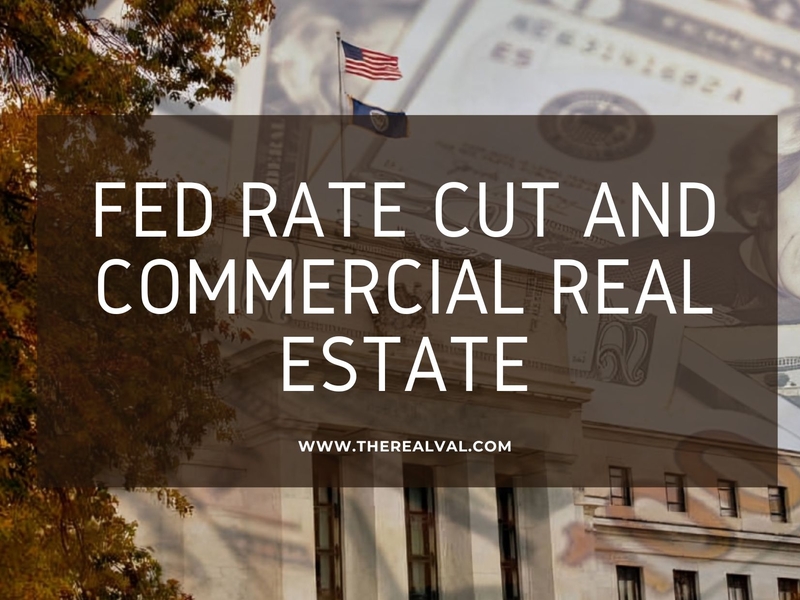The Federal Reserve's recent decision to cut interest rates by 50 basis points in September 2024 is set to have far-reaching effects on the commercial real estate (CRE) sector. This article examines the potential impact of this rate cut, drawing insights from historical trends and current market dynamics.
Historical Context-
Historically, the Federal Reserve has cut interest rates during economic downturns to stimulate growth. Notable examples include rate cuts during the 2001 dot-com bust and the 2008 Global Financial Crisis, both of which played a critical role in stabilizing the CRE market. The Fed’s emergency rate cuts in 2020 also had a significant influence on the sector, particularly in office and retail spaces. Lower borrowing costs, increased liquidity, and improved investor sentiment are typical outcomes of such cuts, often driving greater investment in key real estate sectors like industrial and multifamily properties.
Impact of the 2024 Rate Cut on Commercial Real Estate-
1. Improved Financing Conditions: The immediate effect of the recent rate cut is a reduction in borrowing costs for CRE investors. Lower interest rates make it easier for investors to finance new acquisitions or refinance existing debt, particularly benefiting sectors like industrial and multifamily properties, which are expected to flourish with increased liquidity. Investors who were previously hesitant may now feel encouraged to enter or expand their presence in the market.
2. Cap Rate Compression: Historically, interest rate cuts have led to cap rate compression in safer asset classes like multifamily and industrial properties. Investors seeking stable returns often flock to these sectors, driving up prices and lowering cap rates. However, office and retail sectors may continue to face challenges due to ongoing shifts toward remote work and evolving consumer behaviors.
3. Increased Investor Demand: The psychological impact of a rate cut should not be underestimated. A lower federal funds rate signals the Fed’s commitment to stimulating economic growth, which can boost investor sentiment. This renewed confidence may lead to increased deal-making and development in the CRE sector. For instance, developers might find it more feasible to start new construction projects or expand existing ones.
4. Continued Challenges for Office and Retail Sectors: Despite the positive outlook for many CRE segments, the office and retail sectors may continue to struggle. The rise of hybrid work models has created long-term challenges for office spaces, while retail properties face pressure from changing consumer preferences. Vacancy rates in these sectors may remain high, even with lower borrowing costs.
5. Potential for Further Rate Cuts: Some market analysts predict additional rate cuts later in 2024, which could further stimulate CRE activity by reducing financing costs even more. This could result in an increase in sales and refinancing across various property types. However, experts warn that while the current rate cut is a positive step, it may not be enough to fully resolve the sector’s existing challenges.
6. Sector-Specific Impacts: The impact of the rate cut will vary across different CRE sectors:
- Industrial and Logistics: This sector stands to gain significantly, as the rising demand for e-commerce fulfillment centers continues. Lower financing costs may drive the construction of new warehouses and distribution centers, supporting further growth.
- Multifamily Housing: With borrowing becoming more affordable, demand for multifamily properties is likely to increase, especially given the tight housing market. Investors may be drawn to these assets for their stable cash flow.
- Office Space: The office sector continues to face structural challenges, particularly from the shift to remote work. While lower rates may offer some relief, the sector’s recovery is expected to lag behind others.
- Retail Properties: Although retail has been struggling, lower financing costs could encourage expansion and new leasing activity, potentially revitalizing parts of this sector.
7. Refinancing Opportunities: The rate cut provides an opportunity for CRE owners, particularly those with floating-rate loans, to refinance at lower interest rates. This can reduce debt service costs and improve cash flow, allowing owners to reinvest in their properties or expand their portfolios. Over time, these refinancing opportunities could significantly enhance profitability.
8. Potential Risks and Challenges: While the rate cut brings clear benefits, it also presents risks. Increased competition could inflate property prices, and there’s a danger of over-leveraging as investors chase higher returns in a low-interest-rate environment. Additionally, if economic conditions worsen—such as rising unemployment or inflation—the positive effects on real estate valuations could be diminished.
Impact on Cap Rates-
The rate cut is also expected to influence cap rate across various CRE sectors-
1. Multifamily Sector: The multifamily sector is likely to experience cap rate compression due to lower borrowing costs. Historically, rate cuts have made financing more affordable, which encourages investment in multifamily properties. As demand for rental housing remains strong, particularly in urban areas, investors are expected to pay higher prices for these assets, leading to lower cap rates. Current trends indicate that multifamily cap rates are stabilizing after a period of volatility and are approaching historically normal levels, suggesting a healthy market environment moving forward.
2. Industrial and Logistics Sector: Similar to multifamily, the industrial and logistics sector is poised for cap rate compression as well. The ongoing growth of e-commerce has driven demand for warehouse and distribution spaces, making this sector attractive to investors. Lower interest rates will likely enhance cash flow from these properties, further incentivizing investment and contributing to lower cap rates in this segment. The combination of reduced borrowing costs and high demand positions the industrial sector favorably for future growth.
3. Office Sector: The office sector may face a more complex scenario. Although lower interest rates typically lead to reduced borrowing costs, the ongoing challenges related to remote work and changing workplace dynamics could hinder significant recovery in demand for office spaces. As a result, while there may be some initial stabilization in cap rates due to lower financing costs, the long-term outlook remains uncertain. Experts suggest that cap rates in this sector may not compress significantly unless there is a notable increase in demand.
4. Retail Sector: Retail properties are also likely to experience mixed effects from the rate cut. The retail sector has been under pressure due to changing consumer behaviors and the rise of e-commerce. While lower borrowing costs could provide some relief for retail property owners looking to refinance or invest in improvements, the fundamental challenges facing this sector may prevent substantial cap rate compression. As with office properties, the outlook for retail remains cautious, with elevated vacancy rates potentially leading to higher cap rates in certain markets.
What strategies should investors use to capitalize on the rate cut?
In light of the Federal Reserve's recent rate cut, commercial real estate (CRE) investors have a unique opportunity to capitalize on shifting market dynamics. Here are several strategies to help maximize returns in this new interest rate environment:
1. Focus on Strategic Acquisitions: Lower interest rates often temporarily reduce property values, presenting an opportunity for savvy investors to acquire commercial properties at discounted prices. By targeting undervalued assets, particularly in high-demand areas, investors can position themselves for long-term appreciation as the market stabilizes post-rate cut.
- Discounted Property Acquisitions: Seek out properties that may have been negatively affected by previous rate hikes but are now poised for recovery as financing costs decline.
2. Financing Development Projects: With reduced borrowing costs, financing new construction or redevelopment projects becomes more feasible.
Investors should consider:
- Targeting High-Demand Sectors: Focus on sectors such as industrial logistics and multifamily housing, which are expected to benefit from increased demand and lower financing costs.
- Leveraging Lower Rates for New Projects: Starting development projects now could lead to significant returns as the economy strengthens and demand for space rises.
3. Diversify the Portfolio: Rate cuts can increase market volatility, making diversification key to managing risk. Investors should spread their portfolio across various asset classes:
- Include Different Property Types: Consider diversifying into retail, office, and hospitality sectors, even if they currently face challenges. This strategy can help spread risk while also providing potential exposure to recovery in these sectors.
- Balance Between Risk Assets and Bonds: As interest rates drop, traditional fixed-income investments may underperform relative to equities and real assets. A balanced allocation can capture growth while mitigating risk.
4. Increase Exposure to Interest-Sensitive Sectors: Certain sectors are more sensitive to interest rate changes and may perform well during a rate cut cycle:
- Real Estate Investment Trusts (REITs): REITs offer exposure to real estate without the need for direct property ownership and typically benefit from lower borrowing costs.
- Financial Sector Investments: Banks and financial institutions often benefit from improved lending conditions, making them attractive in a rate cut environment.
5. Optimize Bond Investments
Investors should reassess their fixed-income strategies in light of falling interest rates:
- Focus on Long-Duration Bonds: As yields decrease, bond prices generally rise, creating capital appreciation opportunities. Increasing allocation to longer-duration bonds or bond funds can be advantageous.
- Utilize Bond Ladders: A bond ladder strategy can help manage reinvestment risk while benefiting from falling rates by staggering bond maturities.
6. Monitor Economic Indicators
Staying informed about broader economic conditions that affect the CRE market is essential:
- Keep an Eye on Inflation and Employment Data: Understanding how these factors influence Fed policy will help investors anticipate future rate changes and adjust their strategies accordingly.
- Assess Market Sentiment: Monitoring investor sentiment can offer insights into potential shifts in demand across different property types.
Potential Challenges & Considerations-
- Economic Uncertainty: Despite the rate cut, economic uncertainty remains a key concern. If the broader economy weakens, the benefits of lower interest rates may be limited, curbing the positive effects on commercial real estate.
- Supply and Demand Dynamics: The impact of the rate cut on commercial real estate will also depend on market-specific supply and demand dynamics. Overbuilding or a decline in demand could counteract the benefits of lower interest rates, reducing growth potential in certain areas.
- Investor Sentiment: Investor sentiment is critical in shaping the commercial real estate market. Even with lower interest rates, negative sentiment can dampen investment activity, slowing the pace of market recovery and growth.
The Federal Reserve's decision to cut interest rates is expected to drive substantial long-term changes in the commercial real estate landscape. While the rate cut has the potential to invigorate the market, its actual impact will hinge on various factors. Stakeholders must stay alert to potential risks and market dynamics as they navigate this shifting environment.
Trending





